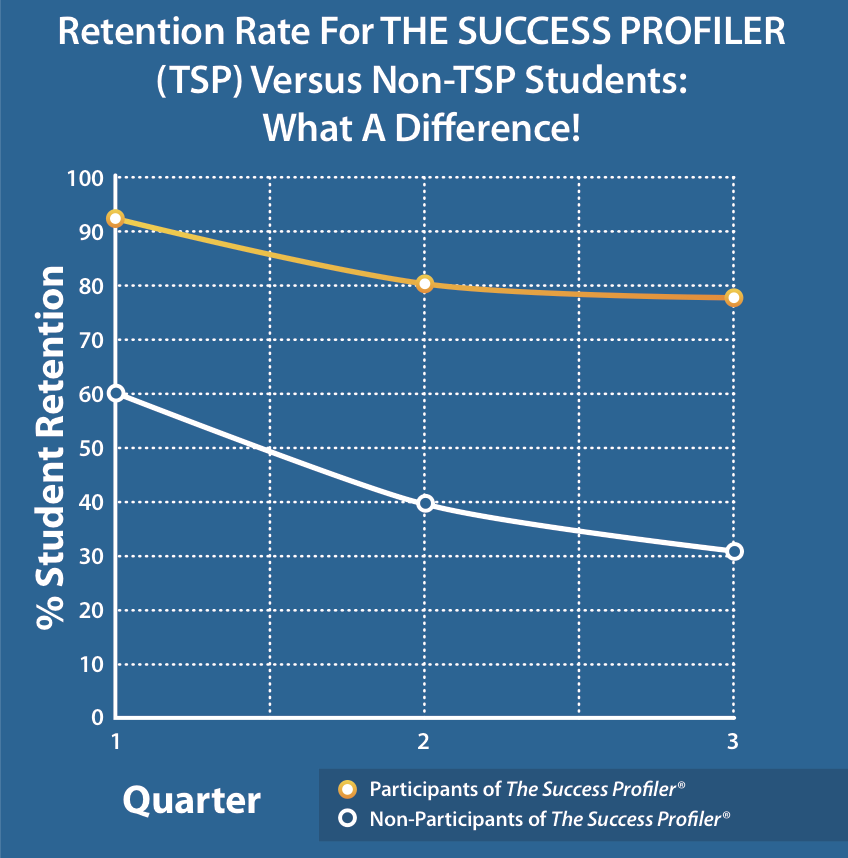
Student retention is a primary concern for all post-secondary institutions. In a study conducted by the Research Department of the Minnesota House of Representatives on community college retention, 55% of new, entering students drop out of college by their second year of enrollment (Finc & Lehnertz, 1991).
To address this issue, Anson Community College conducted a study in the fall of 1994 to determine the effectiveness of The Success Profiler®, and in particular, The Personal Skills Map® (a core assessment in The Success Profiler), in increasing student retention.
One hundred fifty-one students in the winter of 1994/1995 were administered The Personal Skills Map. Through the personal skills assessment an intervention strategy was created for each student. Individual counseling, advising, mentoring and motivational messages were given to students, based upon their assessment results, for example, drive strength/motivation, time management, commitment ethic, etc. Participants were both male and female, minority and non-minority, degree and non-degree students. Ages varied. Most participants in this study were new students enrolling in fall classes.
Results
Retention rates of the 151 students who used The Success Profiler(TSP) were compared to 202 students who did not use The Success Profiler (Non-TSP) over a three-quarter period.
| Data | TSP | Non-TSP | |
| Winter 1994-1995 Enrollment | 151 | 202 | |
| Spring 1995 Retention | 139 | 121 | |
| Fall 1995 Retention | 121 | 80 | |
| Statistics: Retention rates from one quarter to the next (percentages) | |||
| Overall % | TSP | Non-TSP | |
| First Quarter | 93.7 | 92.1 | 59.9 |
| Second Quarter | 56.9 | 80.1 | 39.6 |
| Third Quarter | 50.7 | 77.5 | 30.7 |
To download the entire infographic, click here.
The Conclusion
The longer a student remains in school, the more likely he/she will return. This statement is supported by the increase in overall retention rates. However, in every case, TSP retention rates are significantly higher than non-TSP retention rates. The most significant difference is made in the first two quarters when students are more likely to become discouraged and quit. Continued involvement in the program certainly makes a great difference in student longevity.
Want to learn more about The Success Profiler and Personal Responsibility? Check out the Success Profiler or Personal Responsibility on our website or download our social/emotional learning brochure.
Retention Rates for The Success Profiler Versus Non-Success Profiler Students: What a Difference, Ms. Gloria Jean Walton, Anson Community College, 1995

